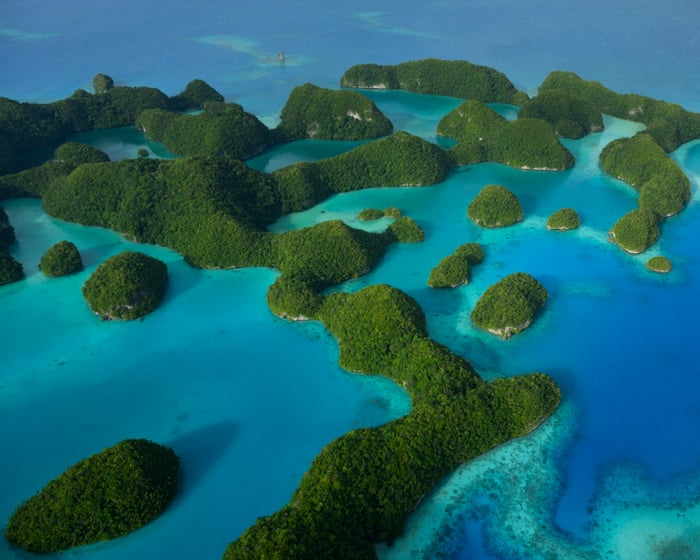As I step into the oasis, the first thing I notice is the drop in temperature. Then, I hear birds singing and the rustle of palm leaves. The harsh sunlight softens, and I can smell water and damp earth. It’s easy to see why desert travelers longed for these havens and why they symbolize peace. As an explorer, I’ve trekked through many oases with laden camels, crossing Morocco and the Sahara on foot, but Skoura—a four-hour drive from Marrakech—is where I go to unwind.
You might picture a cartoon-like mirage oasis: a single date palm shimmering over endless sand. In reality, Skoura is home to about 3,000 people in a small town bordering the palm groves, with 10 square miles of farmland. Many visitors to Morocco start in Fez or Marrakech, stop at Aït Benhaddou, then head to Sahara towns like Zagora or Merzouga. Skoura, less than an hour from Ouarzazate, is perfect for a few days’ stay or as part of a Marrakech city break. Buses from Marrakech take six hours, or you can hire a car or driver from Marrakech or Fez.
Founded in the 12th century by Sultan Yaqub al-Mansur, Skoura grew as a key stop on trans-Saharan trade routes. Located in the Dadès Valley, known as the Valley of a Thousand Kasbahs, it lay along ancient paths from the Sahara to Europe and the Middle East. Caravans carrying goods like gold and ostrich feathers once traveled here from southern Africa. It flourished for three centuries until trade declined, and it lost its prominence. Today, it’s mainly an agricultural center and one of Morocco’s top date producers.
A visit here isn’t a high-energy, sight-packed adventure. It’s a chance to connect with a world so unchanged it feels almost magical. Houses are made of clay, people eat what they grow, and water flows down from the mountains. It’s a lesson in living harmoniously with nature.
Scattered among the trees are stunning kasbahs, but the town is worth visiting to glimpse everyday rural life in Morocco. I love the chicken and chips from roadside cafes on the main street—crispy-skinned and served with fresh bread, spicy harissa, and salted tomatoes. Still, I come to Skoura for the peace and to soak in the unique surroundings. It’s a great place to try affordable, traditional local food, like the everyday tagine.
I’ve found that a bicycle is the best way to explore. Many lodges offer or rent them, or you can join a tour with Skoura VTT Aventures. There’s nothing like speeding down dirt paths winding through date palms. On a bike, you can really take in the scenery and explore. That’s how I learned there are male and female palm trees. A farmer saw me taking photos and explained: males are needed for pollination but don’t bear fruit, so only one is planted for every 20-50 females. In spring, they have large clusters of pollen-filled flowers. He also showed me how he climbs the palms barefoot to harvest, using a curved scythe and a rope to shimmy up the trunk. Encouraged by him, I tried and failed miserably. October and November are harvest times for Skoura’s specialty, the plump medjool dates, bringing lively activity and excitement, making it an ideal time to visit.
Palms need water, and the oasis is fed by an ancient irrigation system called khettara. Though I’m not an engineering enthusiast, these canals, over 2,500 years old, are impressive. They channel water all the way from the Atlas mountains, which you can…In the distance, you can see them just by following the slope of the land—they appear as a series of rounded tunnels. Like the canals, the houses are built from local natural materials and are some of the finest surviving examples of rammed-earth architecture in North Africa. Thanks to their thick walls made of mud, palm, or wood, they stay naturally cool in summer and warm in winter. The roofs are flat, with grass or palm fronds extending over the gutters to direct rainwater away. When it rains, your house slowly “melts,” so constant repairs are needed. Many people are now switching to concrete, which is cheaper.
Skoura is an excellent place to try traditional, affordable local food. Tagine is a daily staple. You’ll find lamb tagine with vegetables, chicken tagine with olives and preserved lemon, and meatballs in tomato sauce on the menu at nearly every restaurant. As someone who lives in Morocco, I’m always searching for something a little different, and L’ma Lodge is my special indulgence. It was built over six years by Vanessa and Xavier, a French-Belgian couple, on the site of an old football field. They gradually won over the local community by using traditional building methods and planting hundreds of trees in their organic garden. Lunch and an afternoon by the pool cost just €25, and all the fruits and vegetables come from their garden. I often begin with a pomegranate salad and happily finish with a dessert scented with orange blossom water. Then I float in the pool, belly full.
A couple of days in the oasis feels like decompression therapy. It’s a world away from the crowded markets of Marrakech.
Kasbah Amridil is another must-see—a kind of living museum. The Nassiri family, who founded it over 300 years ago, still live there. It has all the classic features of a traditional kasbah: a central courtyard for merchants and animals, surrounded by rooms and stables, with upper floors where the family and guests eat, sleep, and pray. Turrets at each corner were once used for defense. The small museum displays artifacts from a rural way of life that is only now fading away. There are also a few rooms available if you’d like to stay.
For a small town, Skoura offers a surprisingly wide range of accommodations to suit every budget. It’s not heavily developed, which is part of its charm, but you still have plenty of options—from around €25 for a double room at the family-run Auberge Famille Ben Moro, to €89 for a double at Sawadi Ecolodge, and more for something truly luxurious.
If you’re ready for a change of pace, Ouarzazate is just 45 minutes away—a bustling desert city. You can visit the film studios (where major productions like Gladiator and Game of Thrones were filmed), ride a quad bike into the desert, or dine at one of the many excellent restaurants. Another interesting option is Aït Benhaddou, an hour away. This red clay town rises from a dry riverbed, and you can climb steep, winding stairs for a view of the desert beyond.
But once I’m in Skoura, I never want to leave. A few days in the oasis is like decompression therapy—a world apart from the busy markets of Marrakech, the clubs of Casablanca, or the surf scene in Taghazoute. In the past, Skoura was a vital part of Morocco’s trade network. Today, it stands as a peaceful reminder of a simpler way of life.
Frequently Asked Questions
Of course Here is a list of helpful FAQs about Skoura Morocco
General Location FAQs
Q Where exactly is Skoura
A Its a small oasis town in Morocco located in the Ouarzazate Province roughly halfway between Marrakech and the Sahara Desert
Q Why is it called an oasis
A Because its a lush green area with thousands of palm trees and farms all sustained by a river and ancient irrigation systems surrounded by a harsh dry desert landscape
Q What does timeless mean in this context
A It means that visiting Skoura feels like stepping back in time Life moves at a slower pace traditional mudbrick architecture is everywhere and modern development hasnt changed its ancient peaceful character
Visiting Things to Do
Q What is the main thing to see in Skoura
A The main attraction is the Skoura Oasis itselfa vast beautiful palm grove you can explore The most famous spot within it is the wellpreserved Amridil Kasbah a historic fortified village
Q What is a kasbah
A A kasbah is a type of fortress or a large building made of earth and straw where local leaders and families used to live They are iconic to this region of Morocco
Q Is it worth staying overnight or just a day trip
A Its highly recommended to stay at least one night The true magic of Skoura is experiencing the serene silence at dawn and dusk which youd miss on a quick day trip
Q What activities can you do there
A You can walk or bike through the palm groves visit the Amridil Kasbah explore other smaller kasbahs enjoy birdwatching and simply relax in the tranquil environment
Practical Tips Logistics
Q What is the best time of year to visit Skoura
A The best times are spring and autumn when the weather is warm and pleasant Summers can be extremely hot and winters can be quite cold especially at night
Q How do I get to Skoura
A The easiest way is to drive or hire a private driver Its about a 4hour drive from Marrake




